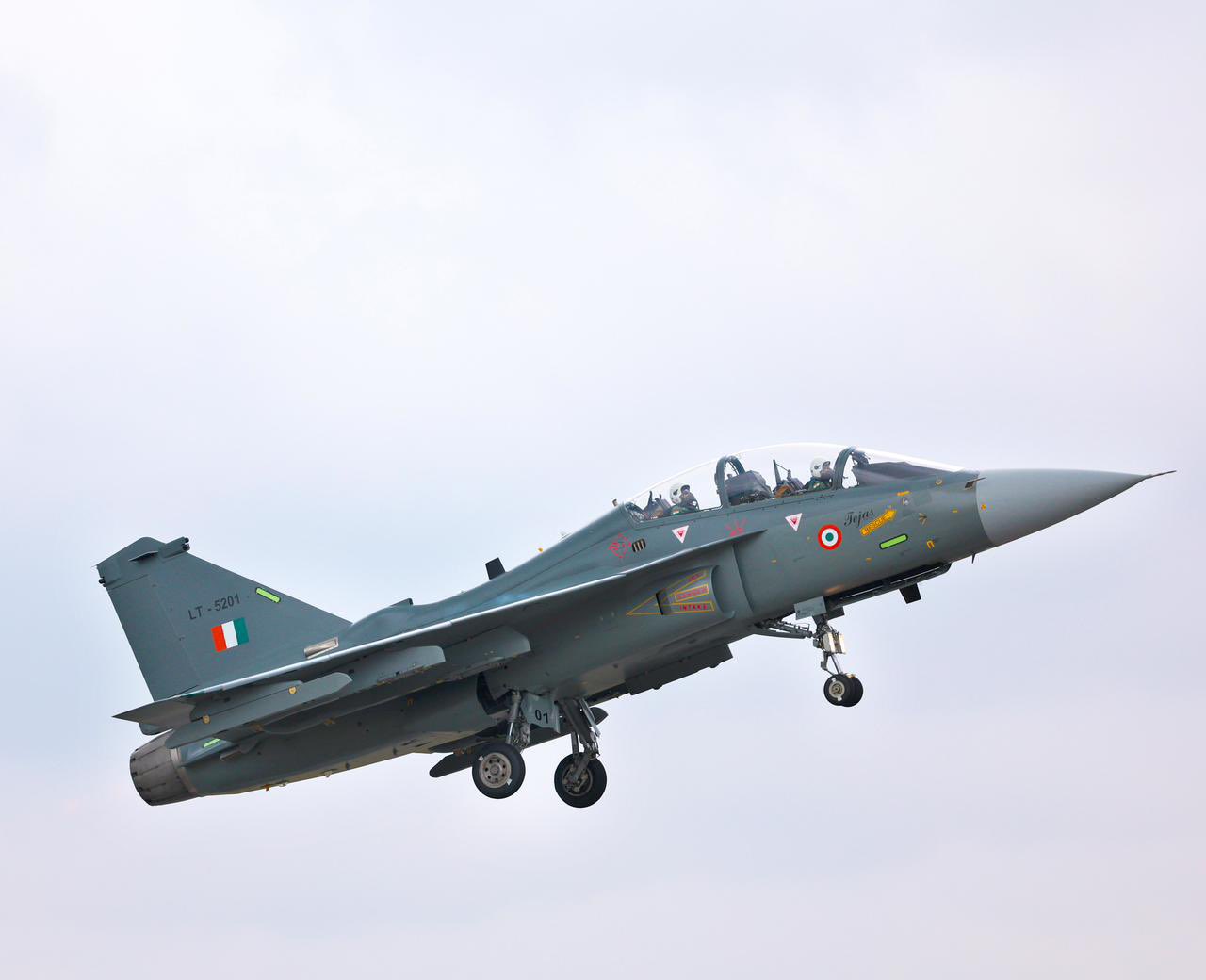The much-anticipated delivery of the Light Combat Aircraft (LCA)-Mk1A by Hindustan Aeronautics Limited (HAL) to the Indian Air Force (IAF) is now expected to begin by the end of July, Indian media reports.
Originally slated for February 2024, the delivery timeline was pushed to March. Facing additional delays, the first jet is expected to be delivered this month.
In February 2021, the Indian Defence Ministry inked a $6.5 billion deal with the state-owned HAL for 83 LCA-Mk1A jets. The deal aims to enhance the IAF’s capabilities with a more advanced fighter jet than the existing LCA-Mk1.
The contract outlined the delivery of 73 Tejas Mk-1A fighters and 10 trainer aircraft, with the first jet to be handed over by February 2024. The entire delivery process was slated to be completed within nine years.
However, these plans have been marred by delays, representing a significant setback for the IAF, eagerly awaiting these new jets to replace the remaining MiG-21 Bison fighter jets in its fleet.
Currently, the IAF operates two MiG-21 squadrons: the No. 3 squadron ‘Cobras’ and the No. 23 squadron ‘Panthers’. One of these squadrons will be phased out this year, and the other in the next year. Both are expected to transition to LCA-Mk1A aircraft.
The timely induction of the LCAs is crucial for the IAF to maintain its fighter squadron strength, preventing it from falling below 30 squadrons.
According to the report quoting officials, supply chain issues, including delays from HAL and General Electric (GE) in delivering the engines, have contributed to the postponements. Despite these challenges, one jet is now anticipated to be handed over to the IAF by the end of July.
AfriPrime App link: FREE to download...
HAL and defense officials remain confident that production will accelerate once deliveries commence. There are plans to increase the production rate to 18 aircraft per year. The objective is to achieve a production rate of 24 aircraft per year by utilizing three manufacturing lines.
Like the current LCA jets, the new LCA-Mk1A fighters will be powered by GE F-404 engines. Addressing the delay in engine deliveries, a GE Aerospace spokesperson cited unprecedented supply chain pressures within the aerospace industry.
The company is collaborating with HAL and suppliers to overcome these challenges and deliver the F404-IN20 engines as soon as possible.
Additionally, the ongoing Russia-Ukraine war has also contributed to the delays. In March, reports indicated that the delivery of a small but critical part of the aircraft, sourced from a European company, had been delayed due to the conflict, which officials deemed “unavoidable.”
Meanwhile, in addition to the 83 Mk1A aircraft already ordered, the Defence Ministry has given preliminary approval to acquire an additional 97 LCA-Mk1A jets, bringing the total to 180.

Tejas Mk-1A vs Mk-2 Variants
The LCA series, comprising Mk-1, Mk-1A, and Mk-2 variants, is expected to form a substantial part of the IAF’s fleet over the coming decades.
AfriPrime App link: FREE to download...
https://www.amazon.com/Africircle-AfriPrime/dp/B0D2M3F2JT
The LCA Mk1A represents an enhanced version of the LCA Mk1, which achieved Full Operational Capability (FOC) in 2020, with approximately 40 of these jets in service with the Indian Air Force (IAF).
Initially, there were no plans for a Mk-1A version, but this variant emerged as a compromise with the IAF in 2015. The original strategy was to advance directly to the Tejas Mk-2, which would have required significant structural modifications and more time.
As a result, the IAF opted for the Mk-1A, which includes four major enhancements over the Mk-1. The Tejas Mk-1A is set to feature advanced electronic radar, upgraded warfare communication systems, enhanced combat capabilities with Beyond Visual Range (BVR) missiles, and improved maintenance features.
Despite these upgrades, the Mk-1A will eventually be complemented by the more capable and larger LCA Mk-2, which is currently under development.
The Mk-2 is intended to be a 4.5-generation aircraft with a greater weight than the Mk-1A. This increase in size is necessary to accommodate the more powerful engine planned for the Mk-2, which will also result in a higher overall weight.
Unlike the Mk-1A, which uses the GE F-404 engine, the Mk-2 will be equipped with GE F-414 engines, offering greater thrust. This upgrade will enable the Mk-2 to achieve a higher top speed and carry a heavier payload.
A deal for HAL to license-manufacture these engines in India is nearing completion. The IAF has committed to procuring approximately 120 LCA-Mk2 jets.
The Mk-2 is expected to have an enhanced combat radius, enabling it to operate for extended periods in combat zones and a larger ferry range, allowing it to cover greater distances without needing to refuel.
With a weight of 7.8 tons, the LCA Mk-2 is projected to carry a payload of 6.5 tons. Unlike the LCA Mk-1A, which has eight weapons pods, the Mk-2 will be equipped with 11.
HAL plans to equip the Mk-2 with homegrown missiles such as the Astra and the Rudram, along with the French Meteor, Mica, and Scalp missiles. The Mk-2 is anticipated to replace the IAF’s aging Mirage 2000 and Jaguar squadrons.
AfriPrime App link: FREE to download...


